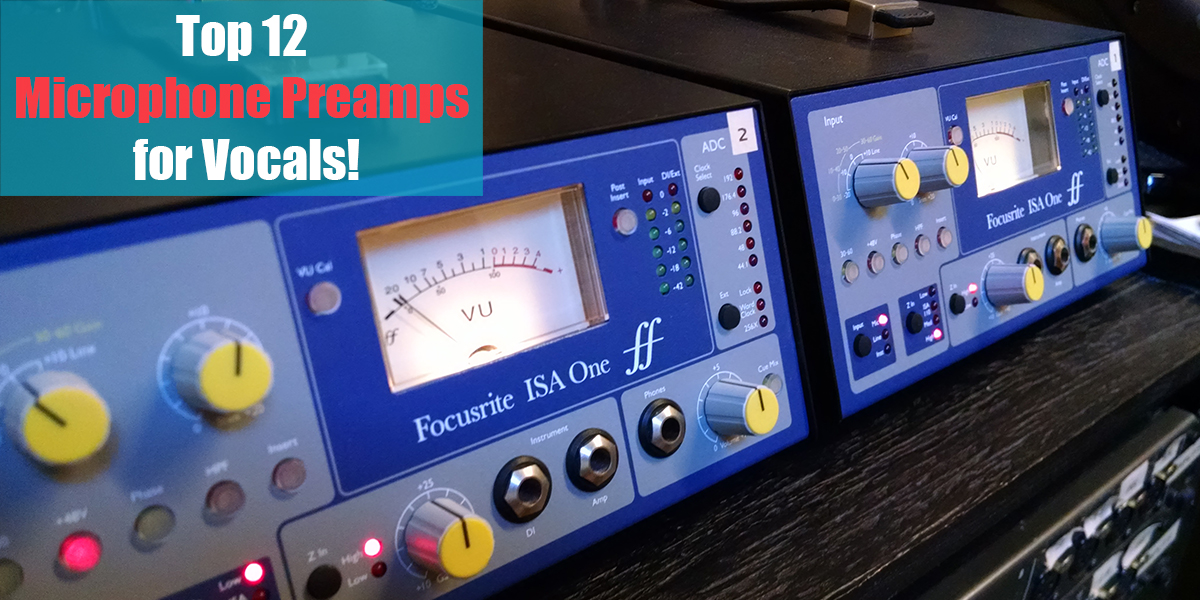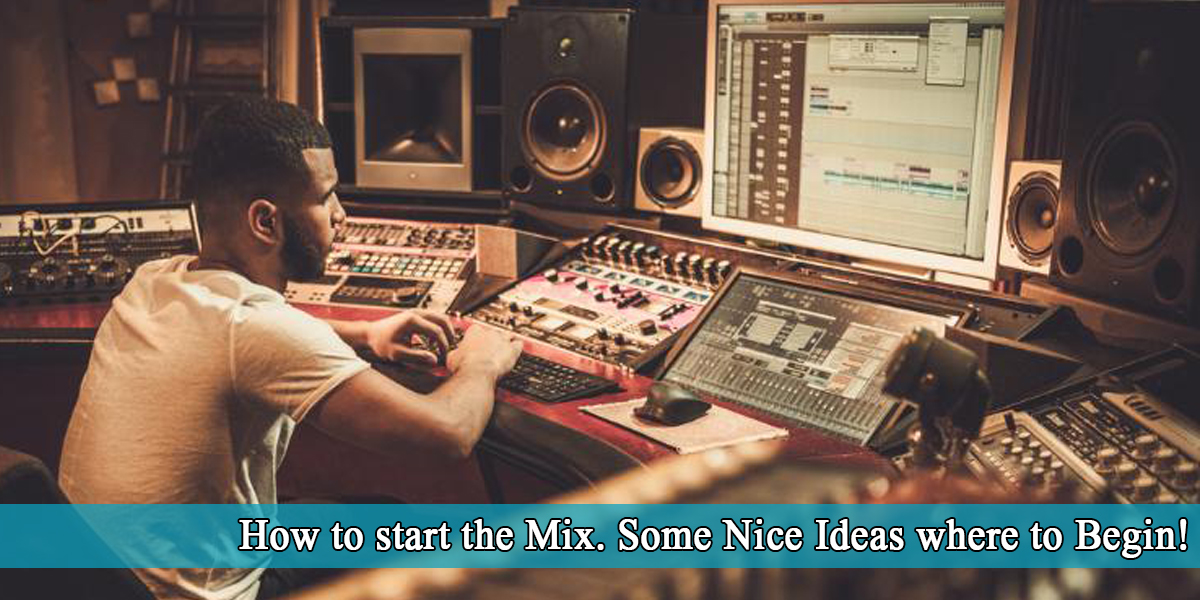Best Studio Microphone for Vocals
Introduction
Searching for the right vocal microphone can feel overwhelming. There are so many options available and lots of new terms to learn. When looking for the perfect microphone for your setup, you’ll need to consider several factors like your budget, compatibility with your equipment, and your specific goals.
In this article, we’ll review the best microphones across all price ranges that perform well in the studio.
Sometimes, certain microphones work better in home studios than in professional analog setups. We’ll also look at how flexible each microphone is. Not every studio microphone is designed for every recording situation—some are made for very specific uses, while others are versatile and can handle a variety of tasks.
Here are some definitions for microphones to get you started:
- Dynamic range — The amount of headroom, measured in a sound unit, between the microphone’s noise floor and its maximum recording level.
- Dynamic microphone — A microphone designed to withstand high sound pressure levels and handle wide dynamic ranges. Suitable for many different applications.
- Diaphragm — The part of the microphone that vibrates in response to sound waves in the air, creating the electrical current that flows through the mic.
- Condenser microphone — A more sensitive type of microphone compared to dynamic microphones. Often requires external (“phantom”) power and is ideal for capturing more nuanced performances, such as vocals.
- Small-diaphragm condenser — A condenser microphone with a small diaphragm area. These are often built in long, slender housings, which is why they are sometimes called “pencil condensers.”
- Large-diaphragm condenser — A condenser microphone with a large, side-address diaphragm area.
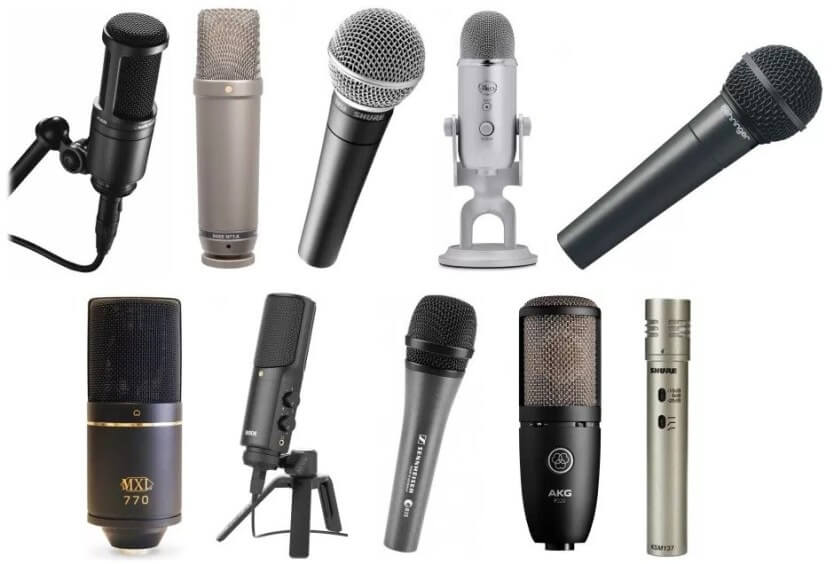
In the $100 to $200 price range, you’ll find beginner-level studio microphones. These microphones are great for getting started and discovering what you can do with them. Most people buy beginner microphones before they even know exactly what they want to use them for.
Typically, these mics are used to record vocals. However, the type of vocals you want to record and the sound you’re aiming for will make a difference. There are several great options in this price range, especially for beginners, but it’s important to know what to look for so you can get started on the right foot.
1. AKG P420
It’s hardly surprising to see an AKG microphone make it onto these charts. They consistently offer great models across all price ranges, and their dual-diaphragm P420 is an excellent condenser mic that comes in at under $200. Even though it looks suspiciously similar to the less expensive P220, the P420 stands out.
We all know that cheap doesn’t usually mean good, but AKG is an exception here. At first glance, the P420 looks like a typical condenser mic, but it’s actually quite impressive. The champagne-finished grille makes up half the length of the mic and is divided into three sections.
Keep in mind that the P420 has a side-address design, paired with a high address that’s common in this price range. AKG uses quality materials for the all-metal body, which has a reassuring weight and a sleek matte black finish.
Overall, it looks and feels like a microphone that should cost much more than its sub-$200 price tag. It might just be one of the best vocal mics available in this range.
Specifications:
- Type: Condenser
- Polar Pattern: Cardioid, Omni, Figure-8
- Frequency Response: 20 to 20,000 Hz
- Impedance: 200 ohms
- Maximum SPL: 135 dB
- Power Requirements: 44 to 52 V
- Attenuation Pad: -20dB
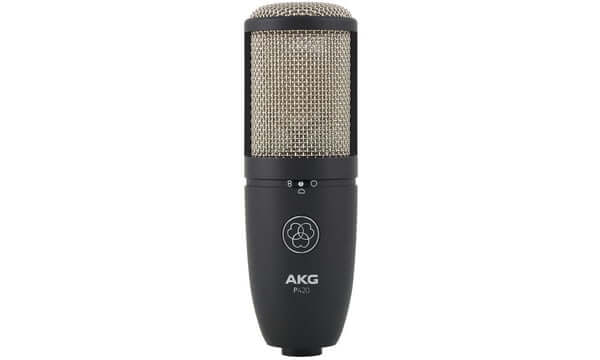
| For US Customers | For EU Customers | Amazon Store | ||
|---|---|---|---|---|
AKG P420 |
2. Rode NT2-A
The Rode NT2A is a professional large-diaphragm, 1-inch capsule studio microphone. It’s well-known for its reliability, affordability, and high-quality sound. The NT2A is made by the renowned company Rode.
For those who may not be familiar with Rode, it’s an Australian-owned audio company established in 1967 as Freedman Electronics.
Thanks to their long-standing expertise in the audio engineering industry, Rode has had the time to refine their products. They produce studio microphones and other audio gear that are well-constructed and deliver fantastic sound quality.
The NT2A’s core performance is rock solid, but its main focus is versatility. This makes it great for a wide range of uses, both vocal and instrumental. For vocals, the mic sounds smooth and warm, with excellent transparency. No matter what type of vocal profile you’re recording, it performs well.
With its variety of switches, pads, and filters, you can use the NT2A to record almost any instrument—whether it’s guitar, drum kits, or even full orchestras. As mentioned earlier, the self-noise is extremely low, so you’ll have no issues capturing a clean recording.
Specifications:
- Type: Condenser
- Polar Pattern: Omni, Cardioid & Figure 8
- Frequency Response: 20 to 20,000 Hz
- Impedance: 200 ohms
- Maximum SPL: 147 dB
- Attenuation Pad: 0dB, -5dB or -10dB
- Highpass filter: Flat, 80Hz or 40Hz
- Power Requirements: 48V phantom power
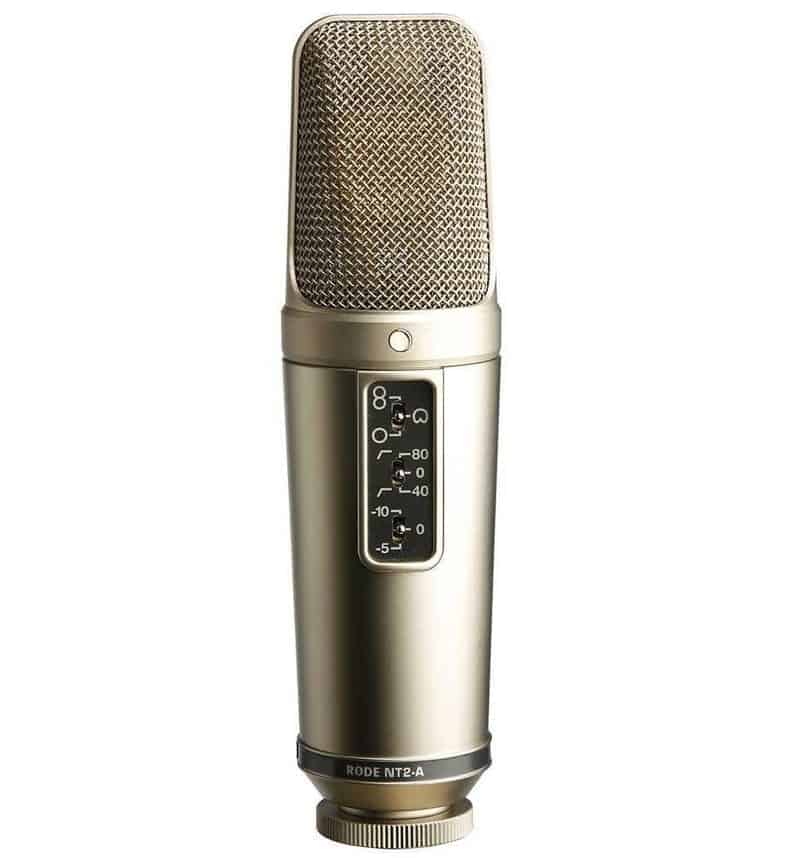
| For US Customers | For EU Customers | <th class="nichetable__th" data-th="<strong>Amazon StoreAmazon Store|||
|---|---|---|---|---|
Rode NT2-A |
3. Neumann TLM 102
The Neumann TLM 102 is a small, elegantly designed microphone that comes at a (for Neumann) relatively low price—$700. It features a new large-diaphragm capsule housed in a smaller-than-usual body, but still keeps that classic Neumann shape.
It almost looks like a miniaturized U 87. The one I have is finished in matte black with a chrome ring and insignia, giving it a retro, Bauhaus-inspired industrial look that says: “I mean business.”
The mic comes with a secure screw-in stand mount and a solid-feeling clamp for adjusting the tilt. It has a cardioid polar pattern only, with no pads or low-cut filters built in. My unit didn’t include a spec sheet or manual, but I was able to find partial specs on Neumann’s website.
The TLM 102 worked especially well on higher reeds; I also used it on soprano sax, clarinet, and flute during sessions. The mic’s slight brightness was perfect for flute and soprano sax, and the open cardioid pattern complemented the challenging tone production of the soprano.
On floor tom, the Neumann delivered a nice balance of low-end punch and transient attack. It also captured clear and sharp transients on a variety of percussion instruments. On acoustic guitar, the TLM 102 provided a good balance of lows and highs from a few feet away, with enough high-end sparkle to satisfy me. It’s truly one of the best recording microphones for vocals out there.
Specifications:
- Type: Condenser
- Polar Pattern: Cardioid
- Frequency Response: 20 to 20,000 Hz
- Impedance: 50 ohms
- Maximum SPL: 144 dB
- Power Requirements: 48V phantom power
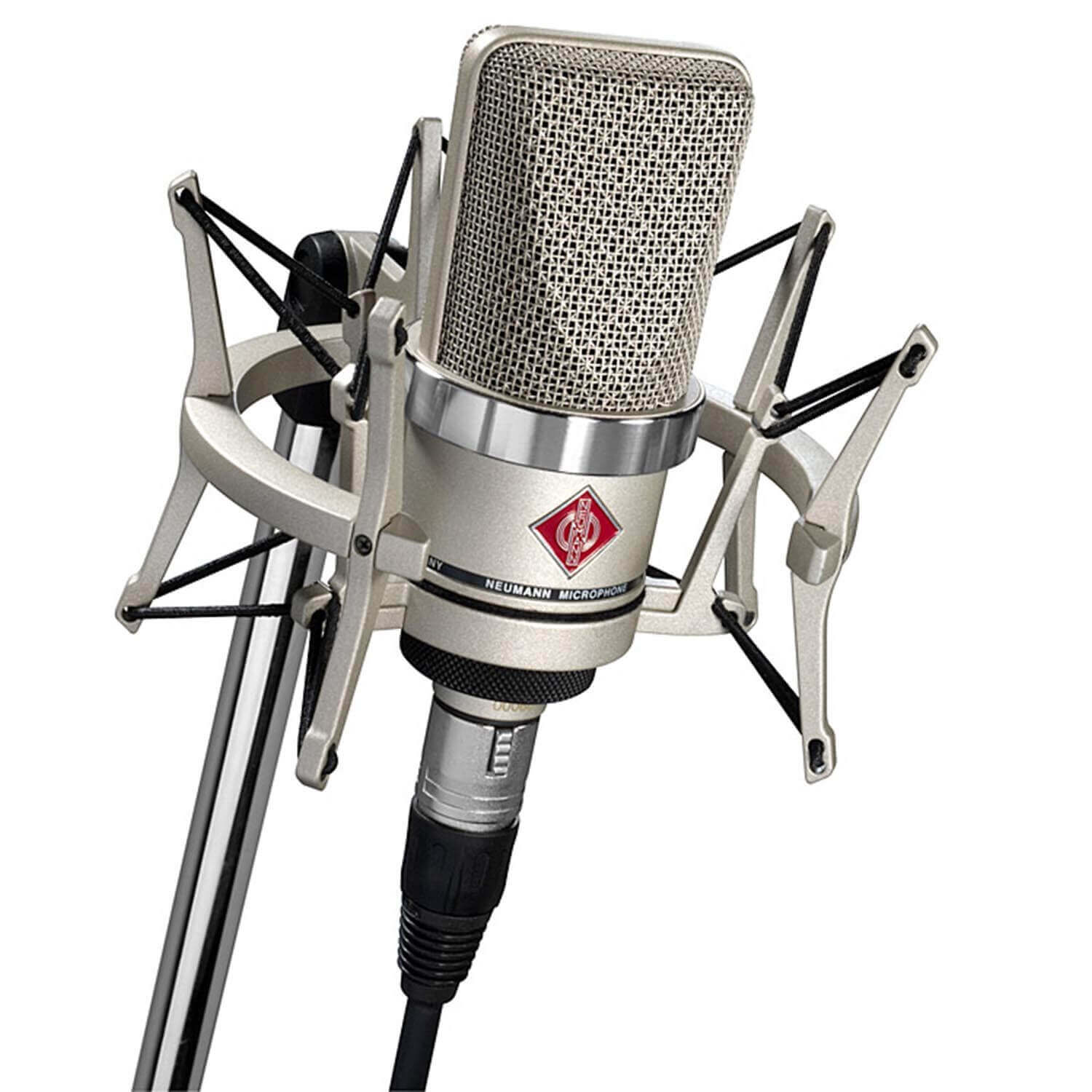
| For US Customers | For EU Customers | <th class="nichetable__th" data-th="<strong>Amazon StoreAmazon Store|||
|---|---|---|---|---|
Neumann TLM 102 |
4. Audio-Technica AT2035
Balancing value and powerful audio efficiency, the Audio-Technica AT2035 condenser microphone delivers clear and detailed sound at an accessible price for home musicians, vocalists, and podcasters.
The large-diaphragm condenser capsule features a cardioid pattern that minimizes feedback and off-axis noise—a welcome benefit when recording in untreated rooms. Plus, the included custom shock mount helps reduce unwanted handling and foot noise.
Use the -10 dB pad to increase headroom and record extremely loud sources—up to 158 dB SPL—without distortion. If low-frequency rumble, hum, or overwhelming bass creeps into your recordings, simply engage the 80 Hz high-pass filter to tame the lows without having to use EQ.
Because the AT2035 is a solid-state condenser with an XLR output, it needs to be connected to an XLR-equipped mic preamp that can supply 48V phantom power, or anything between 11 to 52 VDC.
The AT2035 easily handles high sound pressure levels (up to 158 dB) and resists picking up low-frequency background noise (like traffic, air conditioning, and so on), room reverberation, and vibrations transmitted through stands or floors.
Specifications:
- Massive diaphragm for easy, pure sound and low noise
- High SPL dealing with and huge dynamic range presents unmatched versatility
- Cardioid polar pattern reduces pickup of sounds from the perimeters and rear, enhancing isolation of the specified sound source
- Switchable 80 Hz high-pass filter and -10 dB pad
- Customized shock mount supplies superior decoupling from vibrations
- Operates on 11 to 52 VDC phantom power from a variety of units reminiscent of transportable mixers, desktop audio interfaces, or exterior mic preamps
- Balanced XLR 3-pin output connector
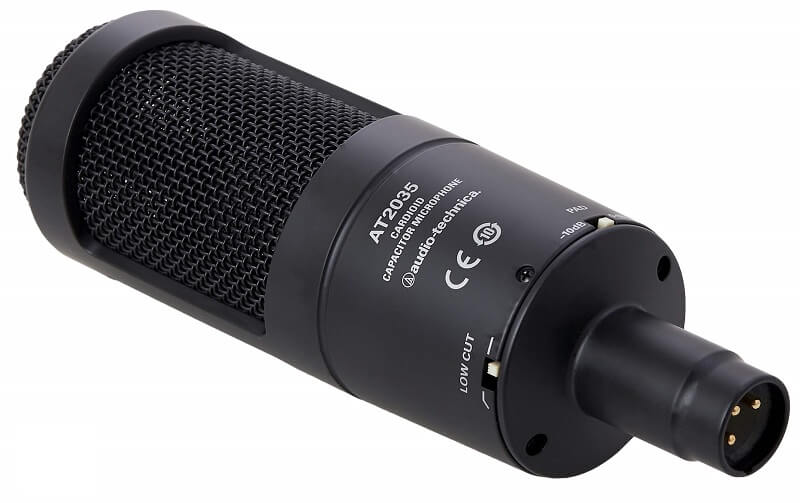
| For US Customers | For EU Customers | |||
|---|---|---|---|---|
Audio-Technica AT2035 |
5. Rode NT1
With such an affordable price range, can this studio condenser microphone really deliver the same impressive vocal performance as other more expensive condensers? The Rode NT1 looks similar to the NT1A, which was released nearly twenty years ago.
However, it has now been completely redesigned to serve as an everyday vocal microphone for all kinds of instruments, including guitars, drums, and of course, vocals.
The brand-new capsule has been fully redeveloped to better focus on the midrange, meaning it captures the most important part of the voice beautifully. High frequencies are smooth, highs are crisp and clear, and the lows are warm and round without ever sounding overwhelming. Overall, this microphone is a standout in its price range.
The NT1 can produce crystal clear sound and is able to pick up the smallest vocal nuances in any type of performance. All you’ll need is a small amount of vocal processing in post-production to get a professional sound.
No one would ever guess you’re using a microphone that costs less than a thousand bucks! If you’re a singer-songwriter or instrumentalist, you’ll love that it can also be used with instruments like acoustic guitar and piano, giving you the same clarity.
Specifications:
- Gold-plated 1″ capsule saved in miniature lyre from Rycote
- Black steel housing with scratch-resistant ceramic coating
- Extraordinarily low intrinsic noise (4.5 dBA)
- 10 Yr guarantee for registered customers (particular guarantee between producer and purchaser)
- Polar pattern: Cardioid
- Frequency range: 20 – 20000 Hz
- Output impedance: 100 ohms
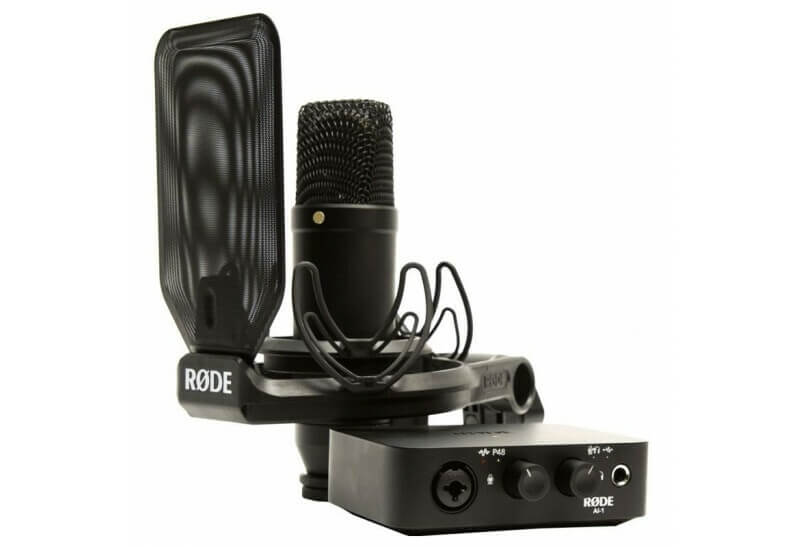
| For US Customers | For EU Customers | |||
|---|---|---|---|---|
Rode NT1 |
6. Shure SM58
The Shure SM58 is a cardioid dynamic microphone with a frequency response of 50Hz to 15kHz and an output impedance of 150 ohms. It weighs about 0.66 lbs, is six inches long, and two inches wide. The SM58 comes with a carrying case and an adapter.
Sound quality is crucial for any good microphone, and the cardioid pattern design makes sure there are no issues when using it on stage. It also has a built-in pop filter, allowing for smooth vocals without the annoying pops and plosives you often hear with lower-quality microphones. This makes it an excellent choice for live vocal performances.
This microphone also features something called a “presence boost.” This means your vocals sound smooth, rich, and warm—rather than tinny or unbalanced, as you might get from cheaper mics.
The Shure SM58 has been tuned to provide a wide range of frequencies. It performs exceptionally well across the frequency spectrum, delivering deep lows, clear mids, and crisp highs.
Overall, the Shure SM58 is simply an outstanding microphone. It outsells its competitors because it’s better than they are. It gives vocalists excellent sound quality, reliable performance, and a level of durability that’s hard to beat.
On top of all these advantages, it’s also an affordable microphone that will pay for itself quickly—and last for a long time afterward.
Specifications:
- Strong development, sturdy metal mesh grille
- Directivity: Cardioid
- Frequency vary: 50 – 15,000 Hz
- Impedance: 300 Ohms
- Sensitivity: -56 dBV / Pa (1.85 mV)
- Size: 23 x 162 x 51 mm
- Weight: 298 g
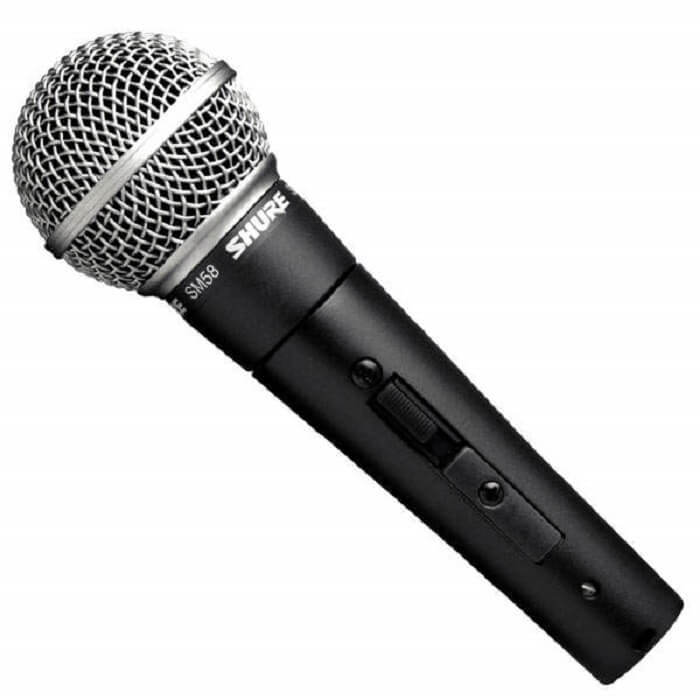
| For US Customers | For EU Customers | |||
|---|---|---|---|---|
Shure SM58 |
7. WA-47 Warm Audio
The WA-47 is Warm Audio’s take on the legendary Neumann U47 microphone, which has been a top choice for singers for decades. It costs about a tenth of the price of a new (Telefunken) U47, making it accessible to singers recording at home or in smaller studios who dream of using the same mic as their musical heroes.
The WA-47 delivers great-sounding vocal recordings. It features an enhanced low-end that helps give singers the “bigger than life” sound that’s often desired in studio recordings.
This mic includes a custom-made replica of the classic K47 capsule and offers a nine-position pickup pattern selector on the power supply. It also comes with a protective storage case and a shock mount.
If you’re looking for an exact reproduction of a vintage U47, you might be disappointed. Because of the target price for this microphone, Warm Audio had to make some design and component changes from the original. However, if you want a tube condenser microphone that’s approachable and a great addition to your studio, this could be the one for you.
Specifications:
- Tube: JJ Slovak 5751
- Frequency: 20 – 20,000 Hz
- Dynamic: 130 dB (A)
- Self-noise: 11 dB (A)
- Max. SPL: 140 dB (<0.5% THD)
- Impedance: 200 ohms
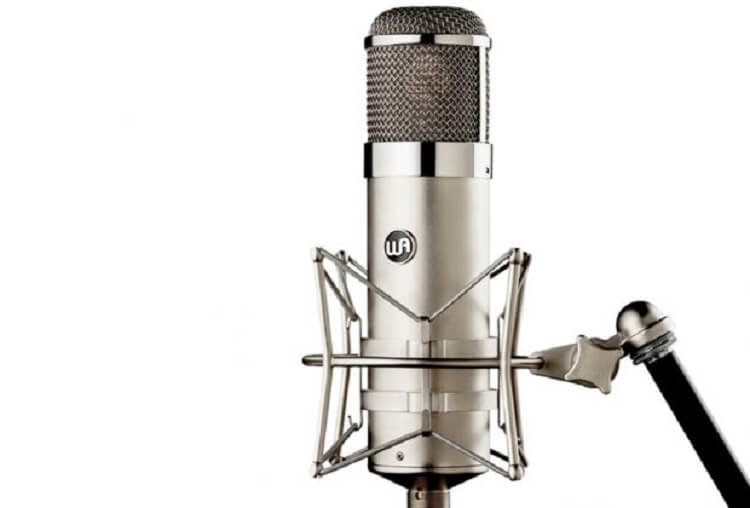
| For US Customers | For EU Customers | |||
|---|---|---|---|---|
Warm Audio WA-47 |
8. sE Electronics T2
The T2 is a Gen2 titanium-diaphragm FET condenser microphone from sE Electronics, which replaced the Titan in sE’s product lineup.
Essentially, the T2 is an sE 4400a with the dual-diaphragm titanium capsule from the Titan, instead of the 4400a’s standard capsule. As sE notes, the T2 and 4400a share the exact same chassis.
The controls are identical for both mics: each offers four selectable polar patterns—Cardioid, Hypercardioid, Figure-of-8, and Omni—which can be switched from the front of the microphone body.
Pattern selection is managed with two switches on the mic: one lets you choose between Cardioid, Omni, or Figure-of-8, while a second switch determines whether the Cardioid mode is regular or Hypercardioid.
A 3-way high-pass filter provides bass roll-off at 60Hz and 120Hz. There’s also a 3-way pad, offering 10dB or 20dB of attenuation, allowing a maximum SPL of 140dB. The compact body makes it easy to position in tight spaces. sE promotes the T2 as being capable of detailed high-frequency reproduction, thanks to the titanium diaphragm’s responsiveness. The mic ships with a shock mount and a case, making it a complete package with all the accessories needed for recording.
What’s unique about the sE Electronics T2 is its hand-crafted titanium-sputtered capsule. This diaphragm is much stiffer than sE’s gold-sputtered capsules, resulting in a faster transient response—crucial when recording instruments with sharp attacks, such as drums and percussion. This ensures the microphone retains clarity and delivers exceptionally accurate performances.
The added stiffness of this special diaphragm also allows the T2 to handle extremely high sound pressure levels, so it can cope with the loudest percussion instruments with ease.
Specifications:
- With particular titanium membrane
- Frequency response: 20 Hz-20 kHz
- Sensitivity: 28mv / pa-31 ± 1dB
- Polar pattern: omnidirectional, cardioid, supercardioid, figure-8
- Impedance: <= 50 ohms
- Noise stage: 14dB (A)
- Max SPL at 0.5% THD @ 1000Hz:> 140 dB
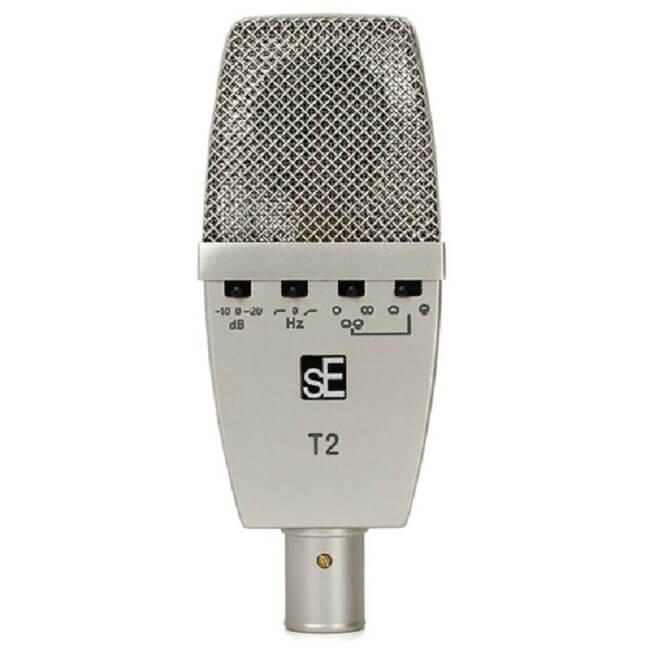
| For US Customers | For EU Customers | ||
|---|---|---|---|
sE Electronics T2 |
9. United Studio Technologies UT FET47
United teamed up with acclaimed capsule designer and producer Eric Heiserman to create a fresh take on the classic K47 German capsule design. Eric collaborated closely with the United team and their capsule manufacturer to develop a brand-new capsule from the ground up. The result is a capsule that sounds open, articulate, and truly three-dimensional.
This process involved evaluating everything—from the sourced Mylar to the thread types of screws. After months of hard work and many iterations, they finally achieved exactly what they were hoping for in the HZ-Series capsules.
While most of the HZ-Series design secrets remain confidential, one standout feature they’re happy to share is their use of dual, matched backplates. With the HZ-Series matching process, each capsule offers much more accurate and consistent quality, both within a single capsule and from capsule to capsule. The HZ-Series capsule is still made in small batches, each one carefully listened to and tested.
United auditioned many recreations of the original German transformer, but quickly settled on a unique offering from Cinemag Transformers in California.
Cinemag’s answer to the classic part is truly a work of art: a large, hefty transformer made from a “striped core” of interleaved high-nickel and steel laminations, wound to the original specs.
Its humbucking design ensures clean, quiet performance. While they could have used smaller or cheaper transformers, United refused to compromise. They believe you’ll be glad they didn’t. This Cinemag transformer turned out to be everything they could have hoped for.
Choosing the right microphone can be harder than ever these days. With so many options on the market—and so many claiming to deliver the classic sound but falling short—it can feel overwhelming. That challenge inspired United: to deliver the real thing, affordably.
The United UT FET47 reflects their true passion for microphones and was built using a holistic design approach. With over 50 years of combined industry experience, United spent years researching and developing this microphone to make it an industry standard.
Specifications:
- Frequency: 20 – 20,000 Hz
- Nominal impedance: 200 Ohm
- Noise level: <10 dBA
- SNR (CCIR at 94 dB SPL): 69 dB
- Max. SPL (<0.5% THD): 136 dB / 145 dB with pad
- Switchable 75 Hz low minimize filter
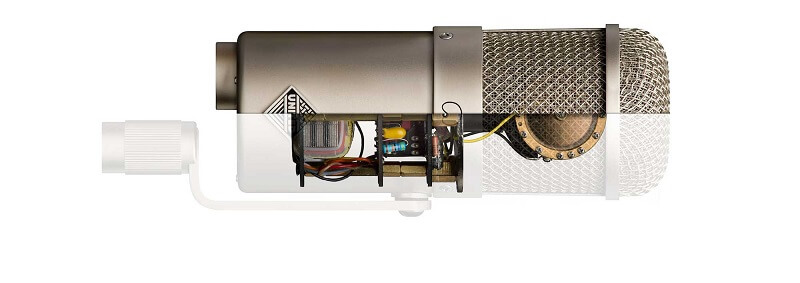
10. EV RE20 RE-Series
The RE20 is a broadcast industry standard for a reason: its sound quality. While it may not be the most expressive mic on the market, or as clear and crisp as condenser mics, it delivers a reliable, high-quality signal that’s perfect for live work, voice-overs, and radio broadcasting.
Most importantly, the RE20 offers outstanding rejection of background noise—something no condenser mic can truly match, regardless of price. In live recording situations, you don’t want to capture unwanted room or street noise, and this is especially important in venues with less-than-ideal acoustics.
Beyond its large dynamic diaphragm, the RE20’s capsule is wrapped in thicker foam compared to the RE320, giving it added dampening.
In side-by-side comparisons, the RE20 might sound a bit weaker and darker. But don’t be fooled by first impressions—the RE20 still has the edge when it comes to signal quality, and its superior background noise rejection is what sets a high-end broadcast mic apart from an ordinary one.
The RE320 is a nice mic too, especially if you prefer a brighter, more expressive sound, but the RE20 tends to be smoother overall.
Finally, one big reason people use dynamic broadcast mics is because of their resistance to RF interference, which is a real issue in radio stations where powerful transmitters are present.
Dynamic mics are less sensitive to electromagnetic interference largely due to their simple electrical design—basically just a coil. All modern dynamic mics use humbucking coils to help neutralize unwanted signals, while condensers are much more complex and electrically sensitive.
Specifications:
- Polar Pattern: Cardioid
- Bass roll-off
- Variable-D design
- Frequency: 45 / 18,000 Hz
- Dimensions (diameter x size): 49 x 54 x 217 mm
- Weight 1474 g
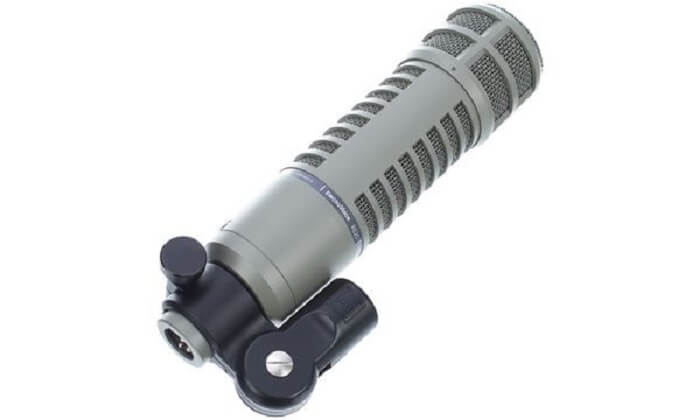
| For US Customers | For EU Customers | ||
|---|---|---|---|
EV RE20 RE-Series |
11. Aston Microphones Origin
This is no low-key ‘soft launch’—Aston Microphones is going all in. The British company is genuinely excited, and it has a story to tell. Aston’s founder, James Young, was previously a co-founder and the Global Sales and Marketing Director at sE Electronics, where he also helped design the original Reflexion Filter. In 2015, James and a few friends decided to strike out on their own, giving rise to the Aston Microphones brand and philosophy.
Just one year later, the team had made impressive progress. Not only had they designed two microphones and a new-and-improved reflection filter from scratch, but they also quickly ramped up worldwide distribution.
Still, in a crowded microphone market, people won’t part with their cash unless they’re convinced a product has the X-factor—something truly special, different, and unique. So, what sets an Aston microphone apart from the rest?
The stainless-steel body goes through a four-hour ‘tumbling’ process with pieces of metal shrapnel, giving it an industrial, heavy-duty look. Inside, a very fine random-weave metal mesh lines the metal protector wires, which also doubles as a pop filter.
This setup works quite well if a singer keeps their distance, but if you get closer than six inches, we’d recommend using a dedicated external pop filter. If the stainless-steel mesh does get dirty from plosive bursts, it can be removed and simply washed under the tap.
Specifications:
- Pattern: Cardioid
- Frequency: 20 – 20,000 Hz (+/- 3dB)
- Pressure level: 138 dB
- -10/zero dB pad
- Low-cut filter 80 Hz
- Requires 48 V phantom
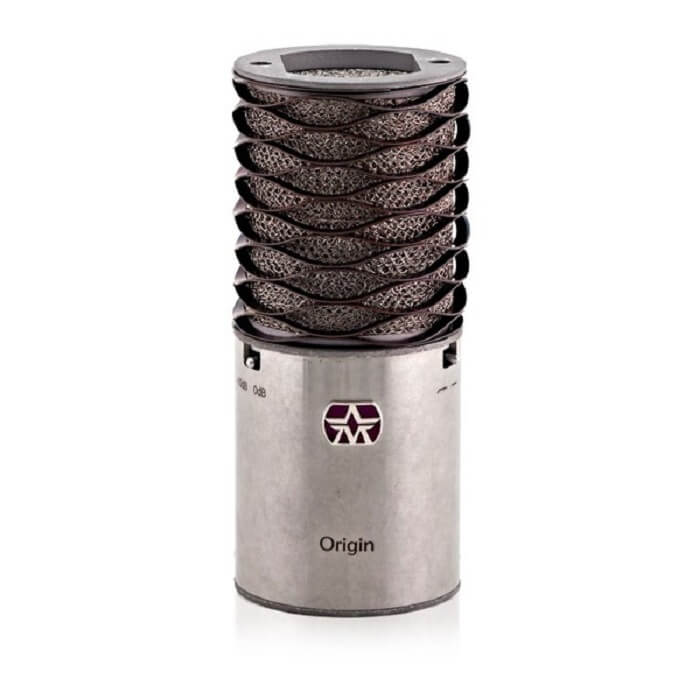
| For US Customers | For EU Customers | |||
|---|---|---|---|---|
Aston Microphones Origin |
12. AKG C214
The AKG C214 is priced at a level that might make many home studio recordists pause before checking their bank balances. After all, we’re living in an age of affordable condenser microphones, and there are solid options available for a quarter of the price. So why consider spending more? Simply put: the sound.
This isn’t your typical entry-level microphone, though if you have the budget, there’s nothing wrong with starting out with one. For anyone who’s spent a few years recording with budget mics, upgrading to the AKG C214 reveals the next level of quality in a way that newcomers might not fully appreciate.
If there’s a drawback to this mic, it’s its sensitivity. Let’s be honest—most home studios leave a lot to be desired when it comes to isolation, acoustic treatment, and soundproofing. We often compensate for this with close-miking techniques and reverb plugins to recreate the sound of a well-tuned space.
On vocals, the C214 adds body in the midrange, so voices that sound thin on other mics gain a new dimension with the AKG. The expanded dynamic range also makes this an excellent mic for inexperienced studio singers—those who haven’t developed full mic technique yet.
Just like with percussion, set the preamp for the peaks and the C214 will capture the detail even when the singer’s dynamic range drops off.
Specifications:
- Frequency: 20 – 20000 Hz
- Sensitivity: 20 mV / Pa
- Preattenuation pad: 20 dB
- Required phantom: 12 – 52V
- Connection: 3-pin XLR connector
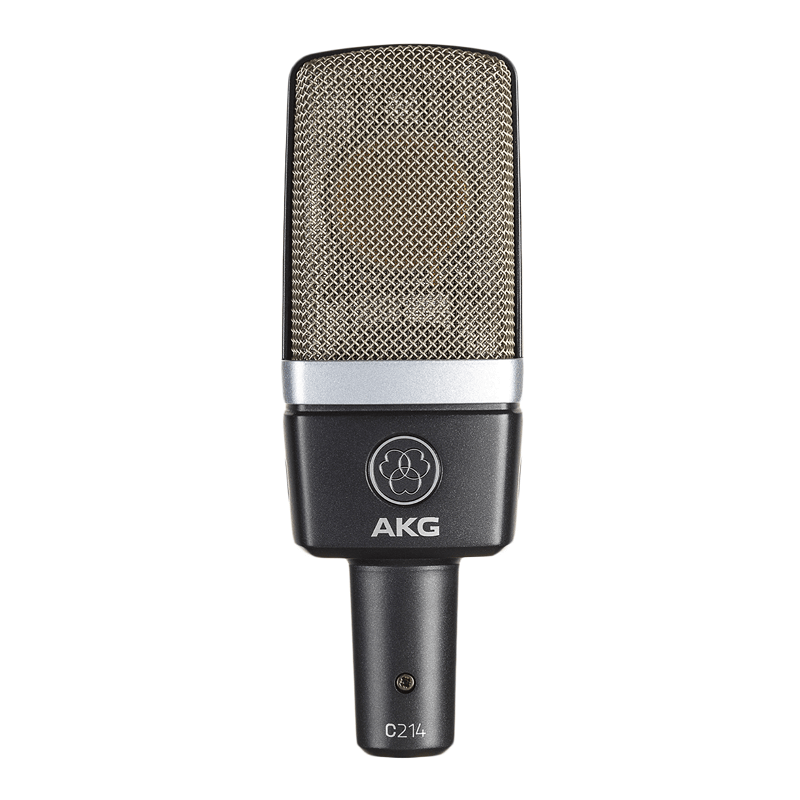
| For US Customers | For EU Customers | |||
|---|---|---|---|---|
AKG C214 |
13. LCT 640 TS
This microphone really caught the crowd’s attention—none of us had ever worked with a mic that lets you change polar patterns even after recording! The LCT 640 TS, designed and engineered in Austria by Lewitt Audio, is a dual large-diaphragm, multipattern condenser that offers Omni, wide-cardioid, cardioid, super-cardioid, and figure-eight modes.
Besides working as a “regular” large-diaphragm condenser mic, it comes with an adapter cable that allows you to capture a complete multipattern session from both outputs. Lewitt Audio also provides their Polarizer plugin so you can change the polar pattern after recording right inside any DAW. In dual output mode (with phantom power supplied to both the front and rear diaphragms), you can capture both sides of the mic at once.
This is a really useful production tool. We liked using different mic positions for some of the tracks we recorded. Plus, by copying the track and plugin, then reversing the phase, we were able to create a completely separate room mic to blend in.
The mic has a nice forward presence and sounded great on every source we tried. It’s very versatile—not just because you can change polar patterns, but also because if you point the side of the LCT 640 TS at the source, you can record in MS Stereo mode.
Specifications:
- Gold-coated capsule
- Neutral frequency response
- 4 Low-cut and pre-attenuation settings
- Sturdy metallic construction
- Frequency: 20 – 20000 Hz
- Dynamic: 121 dB-A
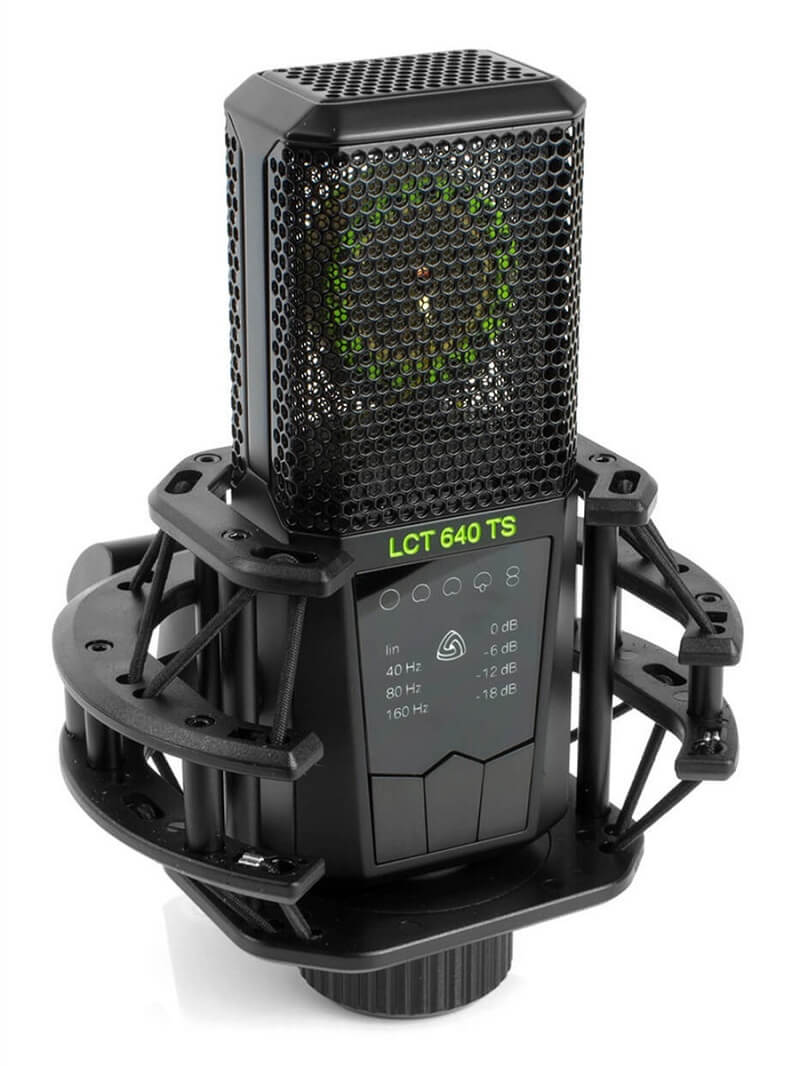
| For EU Customers | |||
|---|---|---|---|
LCT 640 TS |
14. Slate Digital VMS
“VMS” is a hybrid system that combines a condenser microphone, a neutral preamplifier, and state-of-the-art digital processing software that recreates the sound and character of classic microphones and preamps.
This digital microphone system breaks down the barrier between sound engineers and expensive, world-class audio gear, giving you the microphone of your dreams at an affordable price.
Slate Digital has created a digital system that includes a high-quality, large-diaphragm condenser microphone, a dedicated “ultra-linear” microphone preamp, and a plug-in that excels as a modeling microphone. The only downside is that you need to use your own A/D converter.
The microphone comes in black and looks somewhere between an AKG C12 and a Brauner VM1. It’s equipped with a well-made suspension bracket, though the handling noise is higher than we’d expect. The microphone connects to the preamp via a standard 3-pin XLR cable.
The build quality is very high, with excellent metalwork and design. Unlike some expensive modern microphones, the suspension holder is easy to adjust and holds the microphone firmly in place.
The software is part of the Slate Virtual Mix Rack and is very straightforward to use. Our only complaint is that the Slate Digital VMS ML-1 microphone does not come with a high-pass filter.
Specifications:
- VMS plug-in software program can utterly change sound traits even after recording
- Virtual number of basic classic microphones and preamp models in addition to distinctive models for superior recording strategies (could require to obtain and buy from manufacturer website)
- Software Type: Digital modeling
- Platform: Mac, PC
- Format: AAX, AU, RTAS, VST
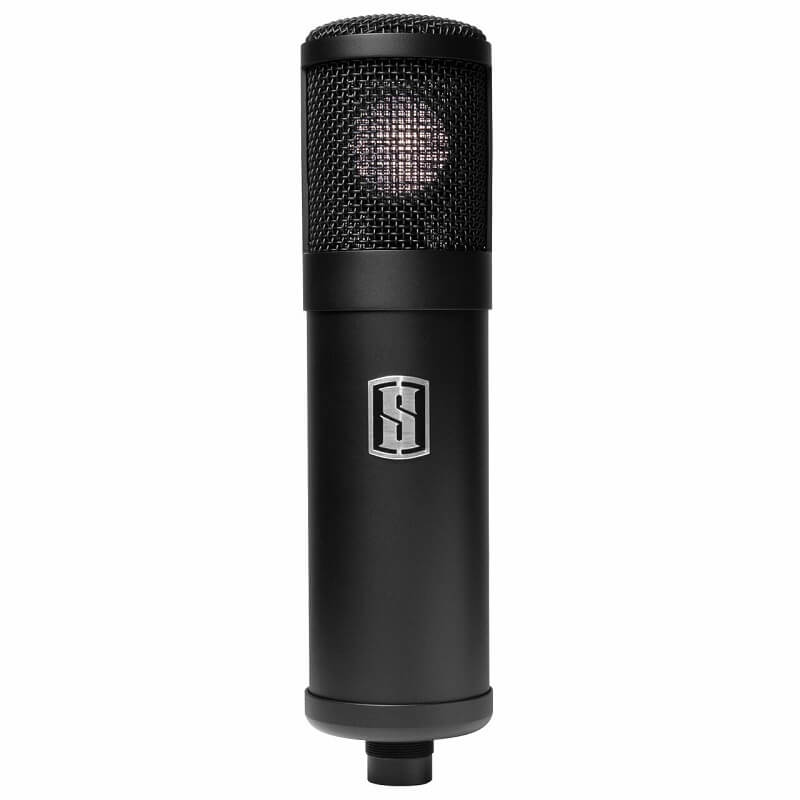
| For US Customers | For EU Customers | ||
|---|---|---|---|
Slate Digital VMS |
15. Audio-Technica AT5040
Audio-Technica has long excelled in the high-efficiency, mid-priced microphone category, but until now, they’ve never tried to break into the “premium mic” market. The AT5040 is their ambitious entry.
A-T’s engineers took a different approach with the diaphragm: instead of just one, they used four rectangular diaphragms, wired together and arranged like a windowpane (two high, two wide).
This mic features discrete components, internal shock mounting, and is assembled by hand in an aluminum and brass frame. It also comes with one of the best shock mounts we’ve ever seen, all packaged in a sturdy Pelican-style case. Altogether, this is the finest microphone package A-T has ever produced. Priced under $3,000, it doesn’t reach the very top tier of microphones, but it stands alongside some highly respected studio standards.
The AT5040’s frequency response is relatively flat—great for a vocal mic. Nearly every engineer who tried the AT5040 commented on how natural it sounded. However, it might not satisfy those (like myself) who prefer a mic with more character and who like to match a mic’s unique sound to a singer’s voice.
The output is extremely hot; we were surprised there’s no pad or high-pass filter. I ended up using a standalone phantom power supply to run the mic and fed its output directly into a Gates Sta-Level. The results sounded excellent.
Specifications:
- The massive diaphragm microphone in a class of its personal
- Handmade
- 4-part rectangular aspect
- 4 Matched ultra-thin diaphragms
- Cardioid Condenser
- Frequency response: 20 – 20,000 Hz
- Impedance: 50 Ohms
- Max. SPL: 142 dB
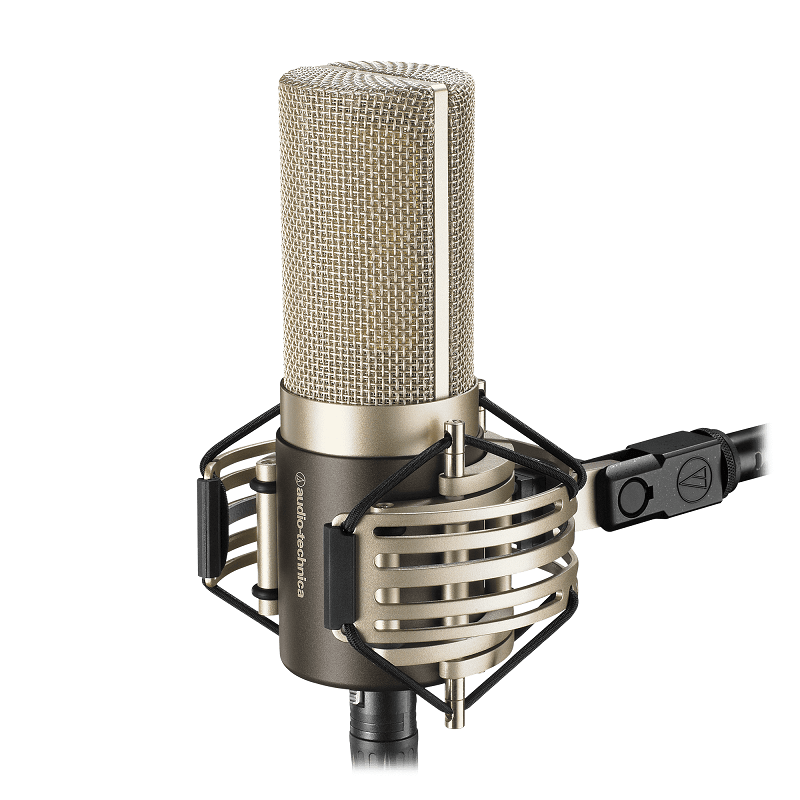
| For US Customers | For EU Customers | ||
|---|---|---|---|
Audio-Technica AT5040 |
Conclusion
Condenser microphones generally fall into two main categories. First, large-diaphragm condenser mics add character and warmth to your sound, making them ideal for vocals, speech, and acoustic instruments.
On the other hand, small-diaphragm condensers are excellent for capturing tonal accuracy and delivering more consistent results across the entire frequency range.
You’ll often find small-diaphragm condensers used on cymbals, or as overhead or ambient mics to add fullness to a mix, for example. Condensers also offer a range of pickup patterns, from cardioid to omnidirectional.
Ultimately, the best microphone for you will depend on several factors, including your budget, specific needs, and the situation in which you’ll use it.
What do you think of our selection? Be sure to check what type of preamp you’ll need for these mics. Create the perfect combination and avoid any issues with your setup. We believe our list of the 15 best studio microphones for vocals offers in-depth insights, no matter how you plan to use them.

